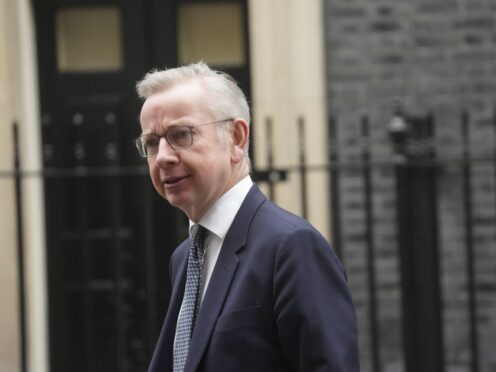
Tens of thousands more homes will be built under plans to regenerate inner-city brownfield sites, Michael Gove has said.
The Housing Secretary is set to detail measures next week that will allow developers to convert empty office blocks, department stores and commercial buildings through streamlined planning processes.
The Government will seek to change the law so properties can be brought back into use more quickly to speed up housebuilding in town centres, and offer incentives for developers to build there.
Rules will ensure revamped buildings are safe and have natural light, according to the Department for Levelling Up, Housing and Communities (DLUHC).
In a speech last year, Mr Gove said an “inner-city renaissance” was the most important component of the Government’s long-term plan to tackle the UK’s housing crisis, with a focus on urban regeneration instead of “swallowing up virgin land”.
In the July remarks, he proposed more than a dozen new development corporations that could use compulsory purchase orders and grant planning permission to drive development in already built-up areas.
It opened up a divide with Labour, which has pledged to make it easier to build on unsightly parts of the green belt.
DLUHC said the further changes will focus on building on brownfield areas to limit developments on the edge of villages and in the green belt, in a move aimed at averting opposition from Tory MPs in shire areas where there is often opposition to development.
Mr Gove said: “This Government has a plan to help people achieve the dream of home ownership and grow the economy, with 2.5 million homes delivered since 2010 – and we are determined to go further.
“But we will not allow the countryside to be concreted over. Communities expect us to make use of empty properties or disused buildings, and redevelop existing derelict sites, before we consider building on other land.
“These changes would build tens of thousands more homes across the country, revitalising our towns and cities while protecting our precious green spaces.”

Prime Minister Rishi Sunak last year dropped compulsory housing targets to ward off a potential backbench Tory rebellion.
He chose instead to make the Conservative manifesto commitment to build 300,000 homes a year in England advisory after construction repeatedly fell short.
Labour’s deputy leader and shadow housing secretary Angela Rayner said: “The public will have lost count on how many times this Tory Government has re-announced this policy. Yet since the Tories came to power, the number of new homes approved on brownfield sites has halved.
“Rishi Sunak abolished mandatory housing targets because he was too weak to stand up to his own MPs. And it’s the public paying the price with a generation locked out of the dream of home ownership.
“Labour will get Britain building again. We’ll reform the planning system and deliver 1.5 million homes – to boost the economy and help working people onto the housing ladder.”

Enjoy the convenience of having The Sunday Post delivered as a digital ePaper straight to your smartphone, tablet or computer.
Subscribe for only £5.49 a month and enjoy all the benefits of the printed paper as a digital replica.
Subscribe